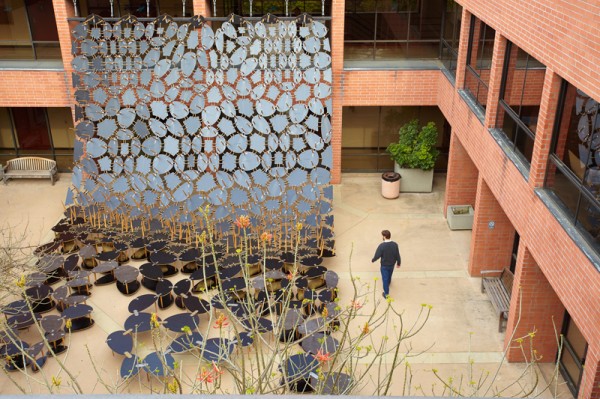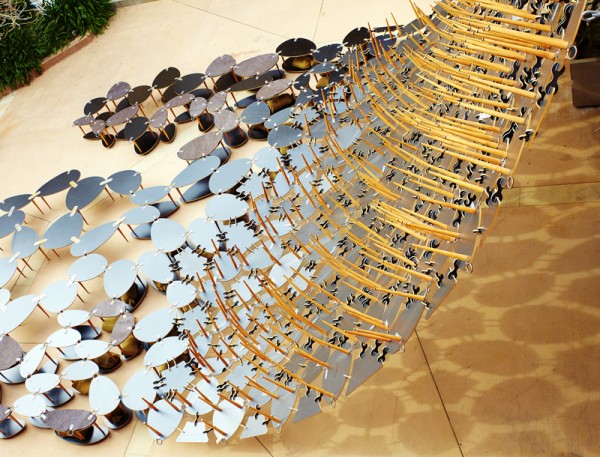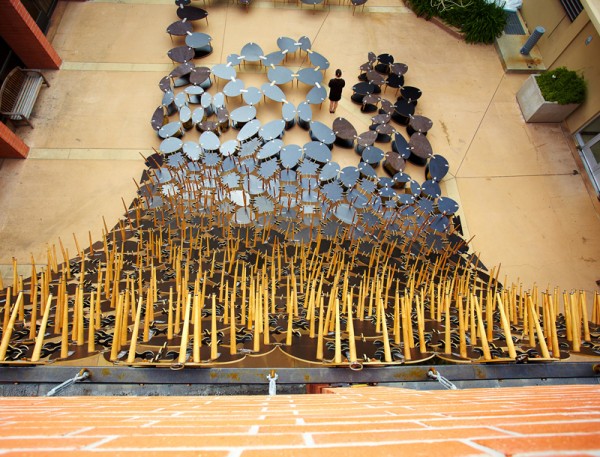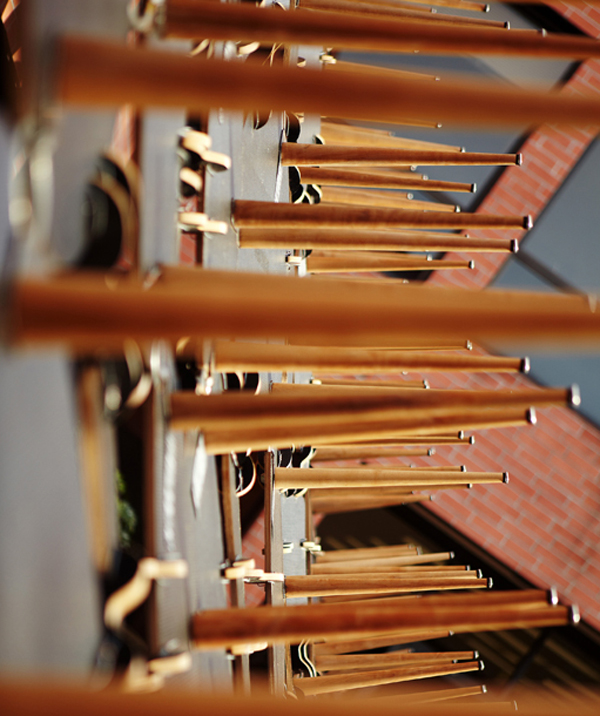Table Cloth, designed by Ball Nogues Studio, is collaboration between the UCLA Department of Architecture and Urban Design, The Herb Alpert School of Music, and UCLA Design Media Arts. It is made possible by generous support from the Graham Foundation for Advanced Studies in the Fine Arts and the UCLA Arts Initiative.
The installation in the courtyard at Schoenberg Hall serves as an integrated set piece and backdrop for performance and everyday social interaction. We understand the work as a tablecloth to adorn and activate the architecture of the campus. Tables are places where people interact socially. Dining tables, specifically, facilitate organization and communication within the typical American home.
We see this project like the cloth adorning a dining table; however, at Schoenberg it will embellish a courtyard, an important social hub, and will facilitate community at the scale of the University. It can be used for a variety of activities, from musical practice to performance, dance to lectures, and from casual conversations to academic discussions. It will embellish the courtyard through the summer of 2010. The processes to manufacture, assemble, and dismantle the performance space are examples of an unique approach to the challenges of sustainability. This approach to design, manufacturing and re-purposing of building materials is a process we term “Cross Manufacturing.”
The Table Cloth is made of hundreds of individual low, coffee-style tables and three legged stools. Each of these household items is a unique product in its own right and can be taken home by members of the UCLA community after the run of the installation. The tables and stools link together collectively to form a “fabric” that hangs from the east wall of the courtyard. When the Table Cloth meets the ground, it unrolls to form an intimate “in the round” performance area. Visitors can sit on the tables and stools within this area.
Upon dismantling, the seating and tables will be given away to the UCLA community. Our aim is for the project’s stakeholders to help promote this process by turning it into an event – perhaps accompanied by a performance.
By using a consumer good as its basic building block, the project expands and critiques notions of “green” architecture. As a visual concept, the installation serves as a symbolic gesture of sustainability and a poetic reminder that the buildings and pavilions we construct although seemingly timeless, are actually impermanent: frozen moments in an ongoing flow of products and materials. Outside of its environmental commentary, the installation dramatically re-contextualizes consumer products – symbols of mass consumption and standardization– into alternative gestures of hope and one of a kind manufacturing.



















